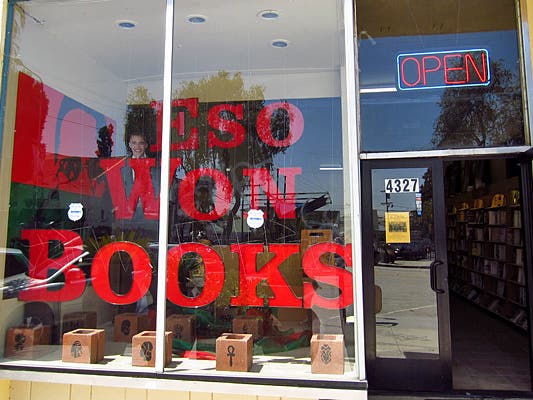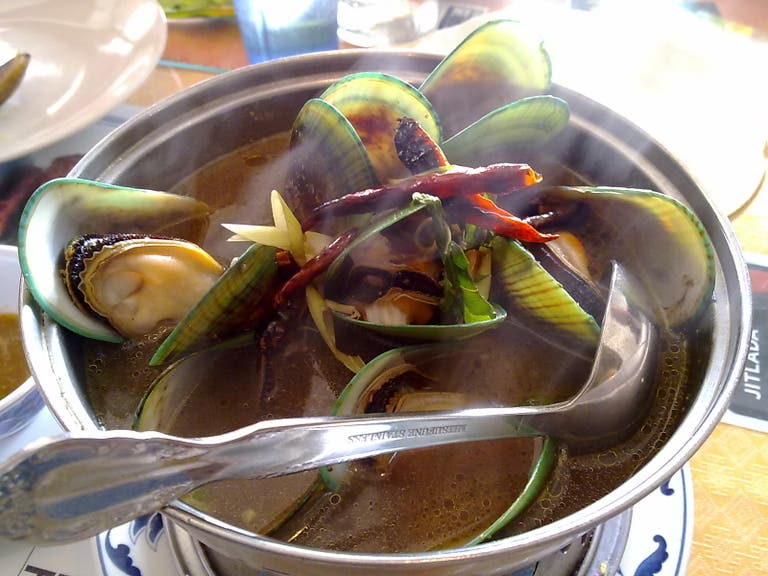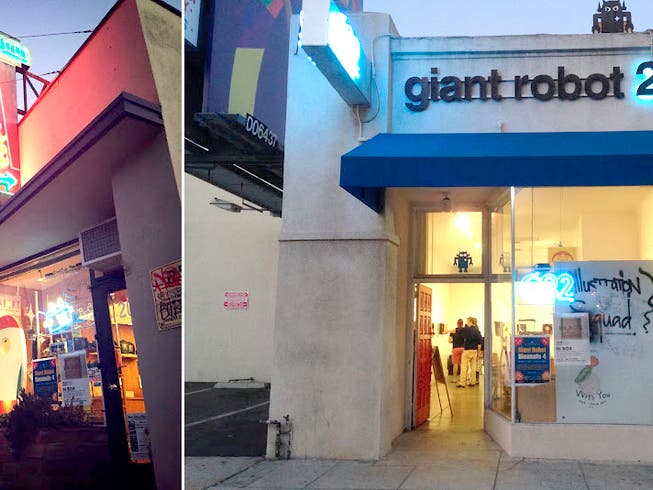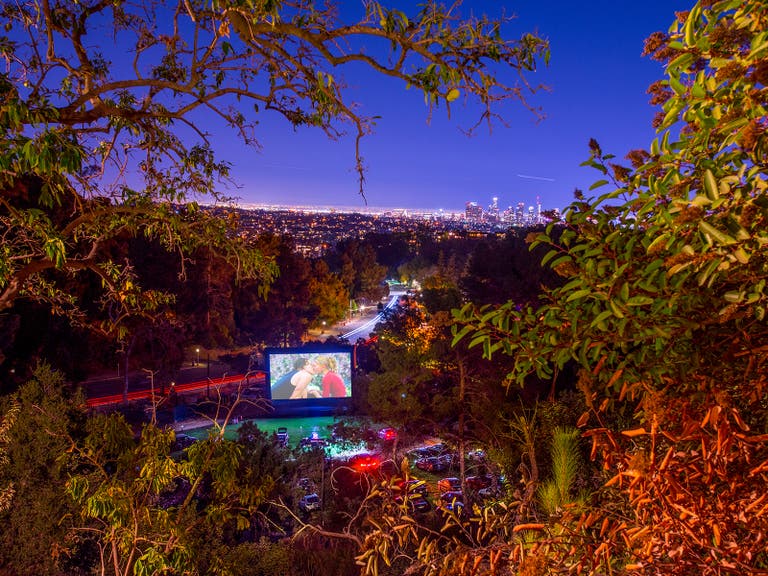The 72-Hour Guide to Global Culture in Los Angeles

Los Angeles is one of the most diverse cities in the world, home to vibrant multicultural neighborhoods throughout the Greater L.A. area. From Downtown L.A. to the Westside, read on and discover a wide range of cultural attractions and global cuisines with our 72-hour itinerary of multicultural Los Angeles.





Hotel Normandie LA
Centrally located in Koreatown, the landmark Hotel Normandie provides vintage accommodations with modern amenities. Following a recent $5 million renovation, the four-story hotel’s 91 rooms have been restored to their original Roaring ‘20s flair, with new, vintage-inspired furnishings, fixtures and tile work of the era. Sizes range from Singles to King Suites, and all guest rooms provide complimentary wifi, business services, Starbucks coffee and bottled water. Hotel guests have free access to an off-site fitness club, and although there are no spa services offered by the hotel, guests don’t have to go far to find a scrub or a steam in Koreatown.
DAY ONE: 9 a.m. - LocoL
Start the day at LocoL, the revolutionary fast food concept from Kogi BBQ founder Roy Choi and Bay Area chef Daniel Patterson. Located on East 103rd Street in Watts, LocoL opened in January 2016 with a mission to serve healthy, affordable food and pay employees above minimum wage while teaching them essential culinary skills. Nothing on the menu is over $6, and instead of sodas, LocoL serves agua frescas. The breakfast menu (“Brekkie”) is available 7-11 a.m. and includes variations on the Egg in the Hole, French Toast holes, yogurt and granola, and green juice. LocoL partnered with Tonx Coffee co-founder Tony Konecny to offer $1 specialty cups of coffee. In April 2017, Jonathan Gold named LocoL the first-ever L.A. Times Restaurant of the Year.


DAY ONE: 10 a.m. - WATTS TOWERS
The world-famous Watts Towers were built by Italian immigrant construction worker Sabato (aka "Sam" or "Simon") Rodia in his spare time over a period of 33 years, from 1921 to 1954. Rodia, a Watts resident, built the towers by himself, using only hand tools and window washer's equipment. The monumental sculpture was declared a National Historic Landmark in 1990, and has become point of pride for the community, hosting events such as the annual Day of the Drum Festival and the Simon Rodia Watts Towers Jazz Festival. The Watts Towers Arts Center provides diverse cultural enrichment programming through tours, lectures, exhibitions of local African American and international artists, and studio workshops for both teachers and students. The Charles Mingus Youth Arts Center presents programs to young area residents by expanding existing music classes offered through the Department of Cultural Affairs.

DAY ONE: 11 a.m. - CALIFORNIA AFRICAN AMERICAN MUSEUM
Located a few miles south of Downtown L.A. at historic Exposition Park, the California African American Museum (CAAM) exists to research, collect, preserve and interpret the history, art and culture of African Americans. The museum conserves more than 3,500 objects of art, historical artifacts and memorabilia. CAAM maintains a research library with more than 20,000 books and other reference materials available for limited public use.

DAY ONE: NOON - LEIMERT PARK / ESO WON BOOKS
Leimert Park, an arts and cultural hub that filmmaker John Singleton referred to as the “Black Greenwich Village,” is located about a ten-minute drive from CAAM. Leimert Park features Art Deco buildings that house Afrocentric art galleries, shops, restaurants, theaters, nightclubs, and cultural centers. The village is also home to the historic Vision Theatre, a performing arts center that has served the community since 1931. The popular Leimert Park Art Walk is a free self-guided visual and performance art experience that takes place on the last Sunday of every month.
Eso Won Books is an independent bookstore located in the heart of Leimert Park Village. Meaning “water over rocks,” Eso Won “provides fluid, safe, stirring opportunities that flow to a reservoir of knowledge for all people to experience.” In addition to its wide selection of books, Eso Won hosts author events that have previously featured Presidents Barack Obama and Bill Clinton, Maya Angelou, Ruby Dee and many more.

DAY ONE: LUNCH - LOTERIA GRILL / ORIGINAL FARMERS MARKET
Opened in July 1934, the The Original Farmers Market at 3rd and Fairfax is beloved by locals and one of L.A.’s most popular tourist destinations. The bustling market features more than 100 multicultural specialty shops, produce stands, food vendors and sit-down restaurants.
Since opening his first Lotería Grill at the Original Farmers Market in 2002, chef/owner Jimmy Shaw has expanded to locations across the city. The menu features the regional Mexican specialties Shaw enjoyed while growing up in Mexico City - everything from his celebrated tacos to refreshing agua fresca, chicharrón de queso and his signature, slow-cooked guiso served with handmade corn tortillas.

DAY ONE: 2 p.m. - LACMA
Renowned as the largest art museum in the western United States, the Los Angeles County Museum of Art (LACMA) boasts an impressive collection of Latin American art, ranging from pre-Columbian masterpieces to works by leading modern and contemporary artists; and one of the most significant collections of Islamic art in the world.
Another LACMA strength is Asian and Pacific Islander art, including art from the regions of China, Japan, Korea, South and Southeast Asia and the Pacific. LACMA houses an entire pavilion dedicated to Japanese art, as well as a dedicated wing of Korean art in the Hammer Building. These significant eastern artworks cover a broad range of historical periods from ancient to contemporary.



DAY ONE: 4 p.m. - Craft & Folk Art Museum
Located on Museum Row a few blocks east of LACMA, the Craft and Folk Art Museum (CAFAM) is the only museum in L.A. that exclusively exhibits craft, folk art and design. CAFAM works to recognize emerging artists and make art accessible to all audiences with exhibitions ranging from local to global and traditional to contemporary. The museum gift shop continues CAFAM founder Edith Wyle’s mission to share beautiful handmade art objects from around the globe. Curated by Yuko Makuuchi, the shop features a delightful variety of items from local and international artisans, such as a Guatemalan pouch, Ethiopian scarf, tapigami mandala earrings and Mexican glassware.

Day One: Happy Hour - EL CARMEN
Before heading out for your first night of gloabl L.A., stop by El Carmen, the colorful Mexican cantina on 3rd Street. The intimate bar is as well-known for its Mexican wrestler decor as it is for their extensive tequila selection. A lively Happy Hour (“Hora de Fiesta”) is offered Monday-Friday from 5-7 p.m., featuring $5 Margaritas, $3 Tecates and wallet-friendly bar bites like nachos, quesadillas and ceviche.

Day One: Dinner - Jitlada
Discreetly located in a strip mall off Sunset Boulevard, Jitlada is wildly popular with locals, foodies and celebs alike. The Southern Thai restaurant is run by the dynamic brother-sister duo of chef Suthiporn “Tui” Sungkamee and Sarintip “Jazz” Singsanong, the gregarious general manager who stops by every table to check on guests. The huge menu spans 300 regional specialties, from coco mango salad to the iconic green mussels, Crying Tiger Beef, and a wide range of curries, including the fiery “wild” curry with eggplant, green beans, bone-in cuts of catfish and an avalanche of spicy chilies.

DAY TWO: 9 a.m. - HOMEGIRL CAFE
Located at the corner of Alameda and Bruno in Chinatown, Homegirl Café serves breakfast, lunch and Saturday brunch, featuring founding Chef Pati Zarate’s innovative menu of contemporary Latin fare and fresh and baked goods from Homeboy Bakery. Breakfast highlights include Chilaquiles, M’jas con Papas, omelets and Homegirl Signature Granola. Homegirl Café is one of the social enterprises of Homeboy Industries, the largest gang intervention, rehabilitation, and re-entry program in the world. Homeboy Industries was founded by Father Greg Boyle, who was named by the James Beard Foundation as the 2016 Humanitarian of the Year.

DAY TWO: 10 a.m. - USC Pacific Asia Museum
One of only four U.S. institutions dedicated to the arts and culture of Asia and the Pacific Islands, the USC Pacific Asia Museum has a collection of more than 15,000 objects, spanning more than 4,000 years from the region of Persia to the Pacific Islands. Since 1971, the museum seeks to further intercultural understanding through its focus on classic and contemporary arts of Asia and the Pacific Islands. Housed in the Grace Nicholson building in Pasadena, the Chinese-inspired architecture is a registered California State Historic Landmark. The museum’s courtyard is inspired by the classic gardens of China, where architecture is in harmony with nature. Dragons, the most important of the mythical beasts, can be seen perched on the ends of the roof. Lotus and peony flowers are strewn throughout, providing a visual feast for the eyes to all visitors.

DAY TWO: LUNCH - EURO PANE
Located across from Paseo Colorado, Euro Pane is the second location of Campanile alum Sumi Chang’s popular European bakery and cafe. Euro Pane 2.0 features a large patio, giant slice of tree that doubles as a communal table, and a bread "aquarium" filled with rounds, loaves and slabs. Chang’s bread is the key to deluxe sandwiches like meatloaf with caramelized onions, mayonnaise, Dijon mustard, tomato and greens; or the vaunted egg salad sandwich, featuring poached eggs, sun-dried tomato paste, mixed greens, chives and a choice of bread, perhaps none better than buttery brioche.

DAY TWO: LUNCH OPTION - LITTLE SHEEP MONGOLIAN HOT POT
Little Sheep’s Mongolian broth is so renowned that at one point, they were selling it in packs. They specialize in Mongolian-style hot pot - the broth is dark, earthy and enhanced with spices including cumin, soy beans, Sichuan peppercorn, cloves and of course, MSG. The restaurant is set up so that each table gets their individual pot. You order ingredients a la carte - try the lamb shoulder, which is imported from New Zealand and sliced paper thin.

DAY TWO: 1 p.m. - NORTON SIMON MUSEUM
The Norton Simon Museum houses a world-renowned collection of art from South and Southeast Asia, with superb examples of this region’s sculptural and painting traditions. On permanent display are holdings from India, Pakistan, Nepal, Tibet, Cambodia and Thailand, as well as selected works from Afghanistan, Burma (Myanmar), Bangladesh, China, Indonesia, Sri Lanka and Vietnam. The collection is particularly rich in art from the Indian subcontinent, including monumental stone sculpture from the Kushana and Gupta periods, and a remarkable group of Chola bronzes from southern India.
The museum is also home to Diego Rivera’s 1941 masterpiece The Flower Vendor (Girl with Lilies). The painting shows a young woman, her back turned, embracing a bundle of white lilies. Rivera’s art was a tribute to the culture and tradition of the Mexican people. “There is need for an art profoundly pure, precise, profoundly human and clarified as to its purpose,” Rivera said in 1929. A contemporary of Rivera and Kahlo, Manuel Alvarez Bravo, captures everyday life vignettes in his photography. Several of his photographs belong to the Norton Simon’s permanent collection.


DAY TWO: 3 p.m. - OLVERA STREET
Located adjacent to Chinatown, Olvera Street is one of the most popular tourist destinations in Los Angeles, located in the oldest district of the city as part of El Pueblo de Los Angeles Historical Monument. The lively Mexican marketplace opened on Easter Sunday, April 20, 1930 following a preservation campaign that was spearheaded by Christine Sterling. Several of L.A.’s most historic buildings are located at Olvera Street, along with dozens of craft shops, restaurants and other businesses.

DAY TWO: 3:30 p.m. - "AMERICA TROPICAL"
Along with Diego Rivera and José Clemente Orozco, the great Mexican muralist/painter, David Alfaro Siqueiros established "Mexican Muralism." The tradition continues in Mexico today and inspired the Chicano art movement in the U.S. During his time in Los Angeles, Siqueiros created América Tropical, an 80x18 foot mural located above Olvera Street. Completed in 1932, the mural depicts a Mexican Indian crucified on a cross beneath an American eagle, with two sharpshooters aiming at the eagle from nearby. The mural’s political message about the exploitation of Mexican workers caused immediate controversy, and it was soon completely whitewashed. América Tropical was restored by the Getty Conservation Institute and opened to the public in October 2012 with a new viewing platform and interpretive center.

DAY TWO: 4 p.m. - AVILA ADOBE
The Avila Adobe is L.A.’s oldest house still standing in its original location, and is designated as California Historic Landmark #145. Originally built in 1818 by Francisco José Avila, it has since been the home to many of his family members and descendants. It even served as military headquarters in the late 1840s. Today, the Avila Adobe’s interior depicts the California lifestyle of the 1840s. Dark wood tables, four-poster beds, candelabras and elaborate carpets create a 19th century atmosphere. The walls of the Avila house are made of adobe brick, a material consisting of clay, water and other organic materials like straw.

Day Two: Dinner - LA GOLONDRINA
La Golondrina is the oldest restaurant on Olvera Street. Opened in 1924, Casa La Golondrina is located in the landmark Pelanconi House, which was built in the 1850s and is the oldest surviving brick house in Los Angeles. The wide range of delicious, authentic Mexican fare includes familiar favorites, popular combos and house specialties like birria de chivo or barbacoa de borrego - traditional presentations of steamed goat or lamb served in its own broth with herbs and chile. Pitchers of margaritas and strolling mariachis complete the unique experience.

DAY TWO: NIGHTLIFE - GENERAL LEE’S
Located in the heart of historic Chinatown, General Lee’s boasts a stunning Tiki-style design and multiple bars across its soaring two-level interior. Stepping inside General Lee’s is like stepping into a modern Film Noir; cocktails boast Asian-influenced names and ingredients, while the music ranges from hip-hop DJs downstairs to live jazz upstairs.

DAY THREE: 9 a.m. - Manuel’s Original El Tepeyac Café
Start the final day of your 72-hour multicultural L.A. tour with a hearty Mexican breakfast at Manuel’s Original El Tepeyac Café, a Boyle Heights institution since 1955. Known by locals as simply El Tepeyac, this landmark is famous for massive burritos like the five-pound Manuel’s Special (as seen on “Man vs. Food”) and the Hollenbeck de Machaca. There’s usually a line, but whether you’re seated in the small, bustling dining room or order from the patio window, it’s well worth the wait for generous portions of classics like Huevos Rancheros, Huevos con Chorizo and Chilaquiles.





DAY THREE: 10 a.m. - AUTRY MUSEUM OF THE AMERICAN WEST
The Autry Museum of the American West is dedicated to exploring and sharing the stories, experiences, and perceptions of the diverse peoples of the American West. Located in Griffith Park, the Autry’s collection of over 500,000 pieces of art and artifacts, which includes the collection of the Southwest Museum of the American Indian, is one of the largest and most significant in the United States.





DAY THREE: noon - Skirball Cultural Center
Located in Brentwood just off the 405 Freeway, the Skirball Cultural Center is dedicated to exploring the connections between 4,000 years of Jewish heritage and the vitality of American democratic ideals. It welcomes and seeks to inspire people of every ethnic and cultural identity. The Skirball achieves its mission through educational programs that explore literary, visual and performing arts from around the world; through the display and interpretation of its permanent collections and changing exhibitions; through an interactive family destination inspired by the Noah’s Ark story; and through outreach to the community.

DAY THREE: LUNCH - Attari Sandwich Shop
For lunch, if you're in the mood for Middle Eastern food, don’t miss out on the restaurants in Persian Square, a few minutes south of Westwood Village. Attari Grill features lunch specials for $10 or less and showcases delicious stews like gheymeh and ghormeh sabzi and a variety of kebabs. If you prefer a sandwich, check out their first outpost, the specialty sandwich shop next door, which offers kuku and abgoosht on Fridays.

DAY THREE: 2 p.m. - Fowler Museum
Located on the UCLA campus in Westwood, the Fowler Museum explores global arts and cultures with an emphasis on past and present works from Africa, Asia, the Pacific and the Americas. The Fowler’s collections comprise more than 120,000 art and ethnographic and 600,000 archaeological objects representing ancient, traditional, and contemporary cultures of Africa, Native and Latin America, and Asia and the Pacific. The museum’s Arts of Africa and the African Diaspora is one of the largest and finest in the United States, and one of the top twenty African collections worldwide.

DAY THREE: 3 p.m. - Giant Robot & GR2 Gallery
Sawtelle Japantown is one of the Westside’s great hidden gem neighborhoods. The historic area is home to a sizable Japanese American population and is known for the trendy shops and restaurants centered on Sawtelle Boulevard. Giant Robot is regarded as one of the shops that helped to jumpstart the neighborhood’s bustling scene. Co-founded by Eric Nakamura, GR began as an Asian pop culture magazine, then became an online store and opened a brick and mortar retail store in 2001. Giant Robot sells original Asian and Asian American art, prints, toys, t-shirts and books with a cutting edge, underground focus. Located a few blocks south, GR2 Gallery is a pioneering showcase for Asian and Asian American artists and designers.

DAY THREE: 4 p.m. - PETERSEN AUTOMOTIVE MUSEUM
Following an extensive $125-million renovation, the Petersen Automotive Museum reopened to the public in December 2015. The striking new exterior wraps the museum with ribbons of stainless steel that evoke motion, speed and the lines of a bespoke automobile. At night, the color and steel forms are lit with LEDs from within to accentuate the sculptural facade of the building.
As part of its transformation, the museum added 15,000 square feet of display space and 25 new galleries. The Petersen utilizes state-of-the-art technology with displays of historically significant vehicles to tell the story of the automobile in Southern California and around the world. New exhibits feature characters from Disney/Pixar’s Cars, Xbox Forza racing simulators, BMW Art Cars, the new $400,000 Ford GT, a motorsports gallery, and virtual tours for the iPhone or iPad.

DAY THREE: Dinner - Parks BBQ
There are a myriad of multicultural dining options in Koreatown, but if you’re a fan of grilled meat and Korean barbecue, then look no further than Park’s BBQ. The quality at Park's is a cut above many of the area’s other KBBQs - highlights include prime Wagyu Beef, Pork Belly and Galbi (beef short rib) Soup. Park’s is located several blocks south of the Wilshire/Vermont Metro Rail station.

DAY THREE: NIGHTLIFE - BREAK ROOM 86
You’ll feel like you’ve stepped back in time at Break Room 86, the '80s-themed karaoke hotspot that’s hidden in the back of The Line Hotel in Koreatown. The young crowd is a cross-section of the city that enjoys sipping cocktails that will remind you of your favorite teen idol and dancing to a soundtrack like your favorite mix tape. Book a private room for you and your friends, whether you're there for the karaoke or the vintage Atari games.
